Habring2 Doppel-Felix (by the man who created the IWC Doppelchronograph)
The 'Doppel' from the Inventor of the Doppel.
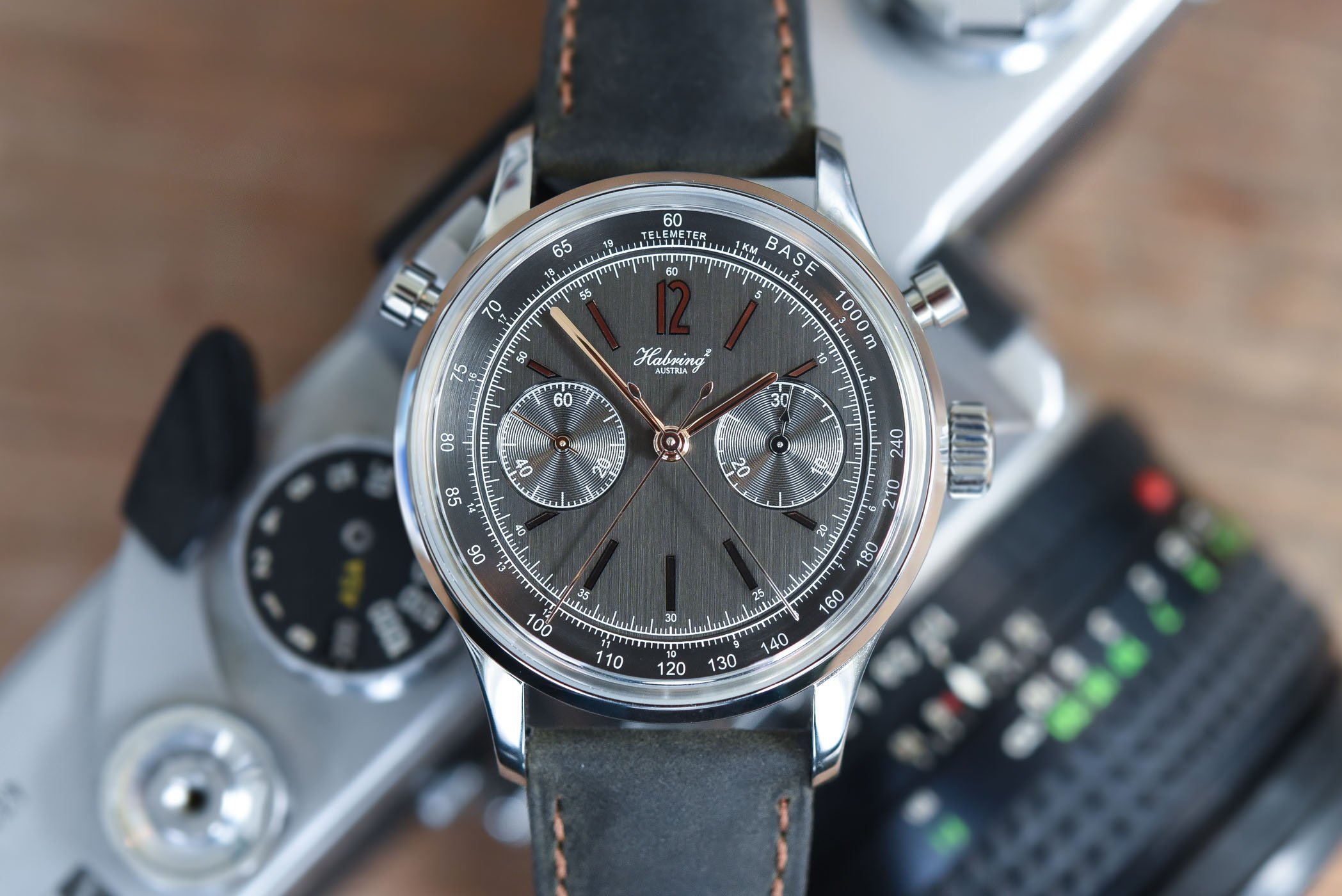
In 2012 Habring² introduced the Doppel 2.0, an affordable split-seconds chronograph based on a Valjoux 7750 chronograph. This was the same recipe that Richard Habring once developed for IWC Schaffhausen, which initially incorporated this movement in the Pilot Doppel Chronograph and later in other watches. When the patent expired, in 2012, Richard Habring was free to use this complication in watches with the Habring² name on the dial, and that led to the Habring² Doppel 2.0. In 2013 the Doppel 3.0 was introduced and last year Habring² presented the new Doppel-Felix that comes with an in-house split-seconds chronograph from Austria. Here’s the Habring² Doppel-Felix!
The Doppel 2.0 was an immediate success when it was launched. It sold out almost instantly and won the Sports Watch Prize at the 2012 GPHG. A year later, Habring² introduced the Doppel 3.0 (see here for the review) – again, a great success for Maria and Richard Habring. Now, with the Doppel-Felix, they have added something that’s just too good to pass up… the split-seconds chronograph is now based on a movement that has been developed in-house and manufactured in Habring²’s surroundings in Austria! This means that Habring² equips their watches with a movement that we could (almost) call “in-house” (or a proprietary movement, if you prefer); good enough for me!
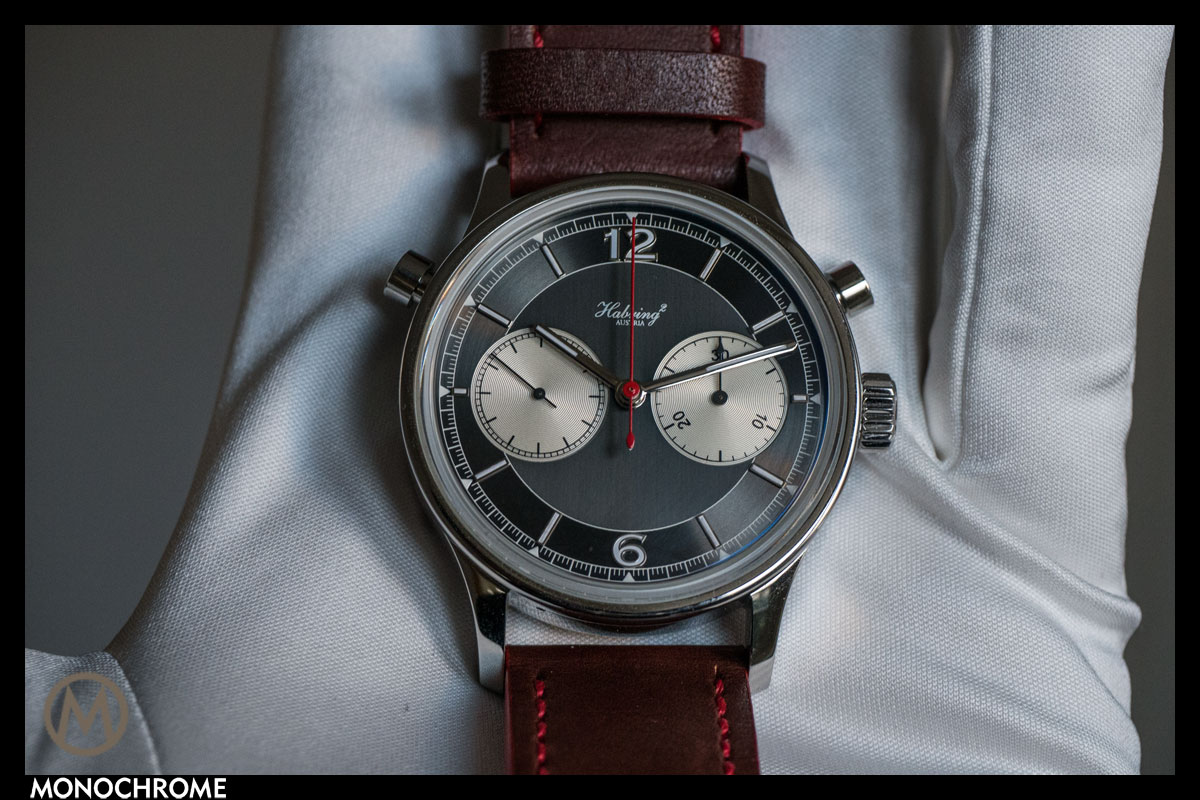
That’s a huge achievement for Richard and Maria Habring, the husband and wife team who run Habring² from the small town of Völkermarkt, in the south of Austria. Felix was their first ‘in-house’ watch, manufactured locally in Austria, followed by Erwin, with a central jumping seconds hand (also referred to as dead-beat seconds or seconde morte) and now, one of Richard Habring’s finest developments, the rattrapante or Doppel Chronograph. The point is that developing your own movement is a big thing; it takes a lot of time and money and for a small watch brand that’s a really big investment. Maybe an incredibly big investment, but a very good investment as the entire line-up of new models with in-house movements looks good great, is priced very reasonably and comes with interesting complications (small seconds, split-seconds chronograph and dead-beat seconds).
Background
For many years, the concept of the split-seconds chronograph involved a highly complex (read ‘expensive’) construction, relying on a pair of column wheels. While the development of a chronograph movement is complex in itself (many of the greatest watchmakers will tell you that it is far more complex than a tourbillon, due to the multitude of levers, gears and springs involved to activate the chronograph function), the rattrapante is a more complicated beast by far.
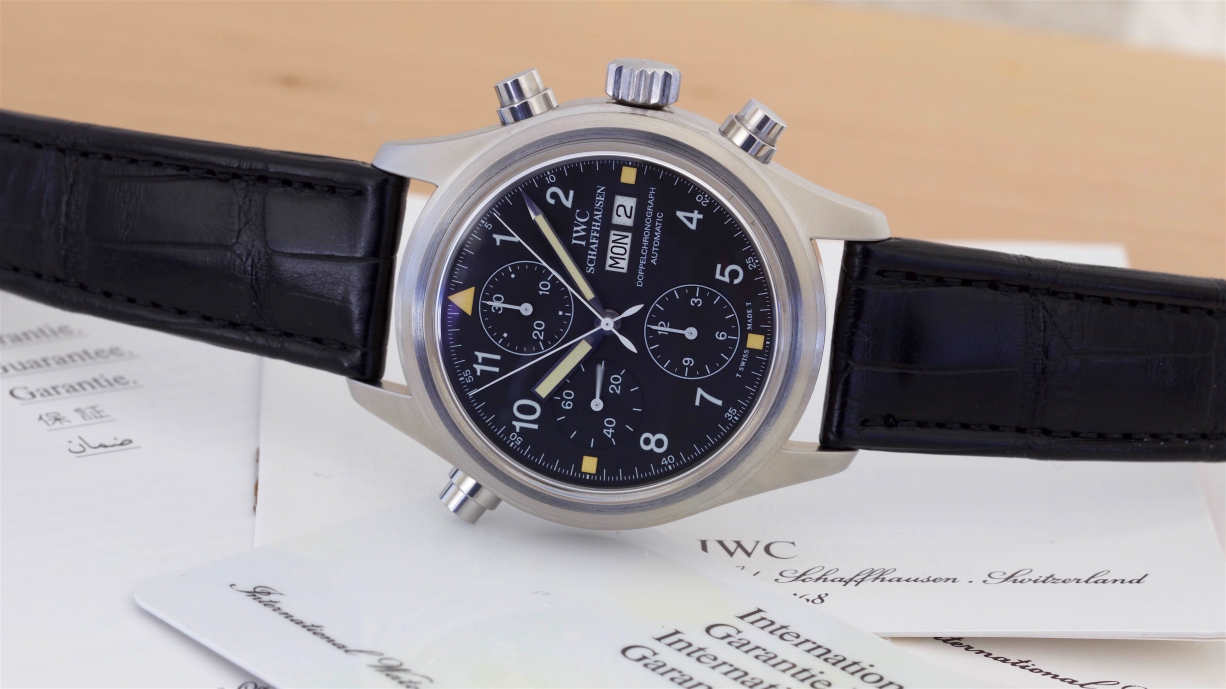
While still working at IWC, Richard Habring found a simple solution to create a double chronograph. At that time – in 1992 – IWC still relied heavily on externally-sourced movements and, in the case of chronographs, this meant Valjoux 7750 ébauches. The main point of interest of this movement is well-known: it uses a simplified cam mechanism to activate the chronograph instead of a complex and hard to adjust column wheel. The genius idea of Richard was to add a simplified cam-operated rattrapante module to the already simple cam-operated Valjoux 7750. Reliable, simple to adjust and to assemble, using externally-sourced parts… The idea was so good that IWC patented it in 1992 and used it on several watches, including the Pilot Doppelchronograph (ref. 3711), the Portugieser Rattrapante Chronograph (ref. 3712), the Ingenieur Doppelchronograph and the Da Vinci.
Richard Habring left IWC in 1996, yet the patent for this simplified Doppelchronograph was still in the hands of IWC. Richard, in the meantime, created his own watch company with his wife Maria – hence the Habring² name – and after 20 years, in 2012, the patent for this 7750-based cam-operated rattrapante expired and was not subject to copyright anymore. Richard was free to use his own creation again.
The Movement of the Habring² Doppel-Felix
For a change, we’re going to start this review by looking at the movement. Not that the watch itself isn’t interesting – it is quite a stunner – but the movement of the Habring² Doppel-Felix is what makes our hardcore watch enthusiasts’ hearts beat faster. But first, a technical point has to be clarified.
What is a double chronograph, a split-seconds chronograph, a Doppelchronograph or a rattrapante?
These four words all mean the exact same thing. In the watch industry, where French is the predominant language, the word rattrapante is used. For customers, it’s a different story and we’ve seen all four versions being used.
A split-seconds chronograph has two central seconds hands stacked on top of one another, but you wouldn’t notice this without taking a closer look.
When the chronograph is started, the two hands start simultaneously. The pusher at 10 o’clock makes it possible to stop the split-seconds (or rattrapante) hand. The ‘normal’ chronograph hand runs on and so do the chronograph counters (in this case only a 30-minute counter at the 3 o’clock position). By pressing that same pusher again, the split-seconds hand catches up with the ‘normal’ chronograph seconds hand and they continue to run in tandem.
A split-seconds chronograph is used to time two events that begin but do not end together – for instance, two cars racing around a track – or to time intermediate elapsed times – for instance, the time of a lap. It shouldn’t be confused with the flyback chronograph, which is a single chronograph watch with the possibility to have an instant reset to zero while pressing a single pusher. A split-seconds chronograph can also be a flyback chronograph.
While Richard and Maria Habring were already famous for the development of a simplified Doppelchronograph module adapted on a Valjoux 7750 – which they did on the Doppel 2.0 and the Doppel 3.0 – the new Felix-Doppel pushes the concept multiple steps further. Not only is the module developed and manufactured by them or by sub-contractors located in the region, but so is the movement. Indeed, the Doppel-Felix isn’t equipped with an out-sourced Valjoux 7750 anymore but by the proprietary calibre A11R and A11RD (same movement with the addition of a pointer date complication, not shown here).
What is the calibre A11R? Well, because the Doppelchronograph was designed to be adapted on a cam-operated Valjoux movement, the main idea when developing this proprietary calibre was adaptability. This is why, when he was creating the A11 base movement, Richard made sure that it could be fitted with all his additional modules – jumping seconds, foudroyante, and of course, the split-seconds chronograph. For this reason, the calibre A11 shares many of its specifications with the non-copyright-protected Valjoux 7750 – dimensions, position of the hand axis, position of the gear train to adapt the clutch and easily create the connection between the base movement and the Doppelchronograph module.
On the other hand, this movement differs on many points. The base movement itself – as you can see in our review of the 3-hand Felix – uses a specific 3/4 plate and has a much slimmer profile than the 7750 or its 3-hand variants. Also, the finishing and decoration are entirely different. Technically, the A11 calibre uses an anti-magnetic escapement as well as a KIF anti-shock system (usually Incabloc on Valjoux) as well as the manual assembly of anchors, the counting of hairsprings and the manual production of movement wheels. As for the specifications, nothing very surprising here with its 4Hz frequency and 48-hour power reserve (even though Habring uses a different mainspring). Overall, if the roots of the 7750 are still present, the calibre A11 is a widely improved version, with evolutions and upgrades on most parts. Furthermore, it is good to know that most of the parts are produced by Richard and Maria, or by local suppliers – also located in Austria.
As for the Doppelchronograph, no evolution on this side. The same module is attached on top of the movement and almost entirely covers the base calibre. The activation of the chronograph is done thanks to two cams and the rattrapante is controlled by a traditional (yet simplified) pair of clamps. As always with this movement (this is also true for IWC models), the look is technical, almost utilitarian. However, if the visual prestige isn’t the same as a Patek split-seconds model, the result is a pleasant movement which does exactly what it claims: splitting the seconds. The decoration is pleasant, with perlage on the rattrapante bridge, blued cams and various finishing techniques (soleillage, straight graining, bevelling…)
The Habring² Doppel-Felix (the watch)
There was nothing wrong with the Doppel 2.0 and the Doppel 3.0. They were nice watches. Yet, in all fairness, the new Habring² Doppel-Felix is much more attractive in terms of design. Not as minimalistic as Felix and Erwin, not really vintage but with some 1940s codes, the watch is balanced and highly attractive. A true winner.
Considering what ticks inside the case – the Doppelchronograph isn’t a small movement – the watch is relatively large, with a 42mm diameter and rather long lugs. It is quite a thick watch too, somewhere in between 14.5mm and 15mm. However, the design is clever, with thin and brushed case bands combined with a protruding bezel and case back – both attenuate the thickness. The watch wears well but as always, a test on the wrist will dispel any doubts regarding the comfort (for the record, the watch is worn here on a 19cm wrist).
One thing to note on the Habring² Doppel-Felix is the absence of markings/engravings, with the exception of the dial. Neither the case, the case back or the crown have a logo or an inscription, something that adds to the sleek look of the watch and to the sensation of exclusivity – the feeling of having a custom-made product rather than a mass luxury product that needs to tell the world where it comes from. Overall, the case of the Habring² Doppel-Felix is well finished and assembled and feels solid. On top sits a domed sapphire crystal, which again helps to attenuate the feeling of thickness and adds to the charm of this watch.
As all other Doppelchronographs by Habring², the Doppel Felix has the signature and distinctive “bullhead” style, with the pushers located at 2 and 11 o’clock. Not only does this give the watch a unique look but this configuration is also user-friendly – one pusher triggered by the index finger, the other by the thumb.
As for the dial, the Habring² Doppel-Felix is available in two versions – silver or anthracite grey – however, this is more than just a different colour. The silver one (not shown here) features a pointer date on the periphery of the dial (with a long central hand), while the grey version (seen here) feels slightly sportier with a tachymeter scale on the inner flange.
Despite the multiple indications, the Doppel-Felix remains clean and easy to read. The choice of a bi-compax layout (with small seconds at 9 o’clock and a 30-minute counter at 3 o’clock) adds to the vintage charm of this watch and its natural visual balance. Also, it a warm and charming watch with its gold-coloured indices and hands, with the exception of the 30-minuter counter and the main chronograph hand, which are silver-coloured.
Conclusion
Overall, wearing the Habring² Doppel-Felix has been a real pleasure. It is visually even more appealing than the previous Doppel watches and the addition of the proprietary movement certainly is a huge plus for collectors. No surprise concerning the split-seconds function, as clearly, we didn’t expect less from the man who created this simplified but highly functional module. Priced at EUR 7,750 without date and EUR 8,250 with date, it is even one of the most accessible split-seconds chronographs available on the market – and with an exclusivity that mainstream brands can’t offer. More details on www.habring2.com.


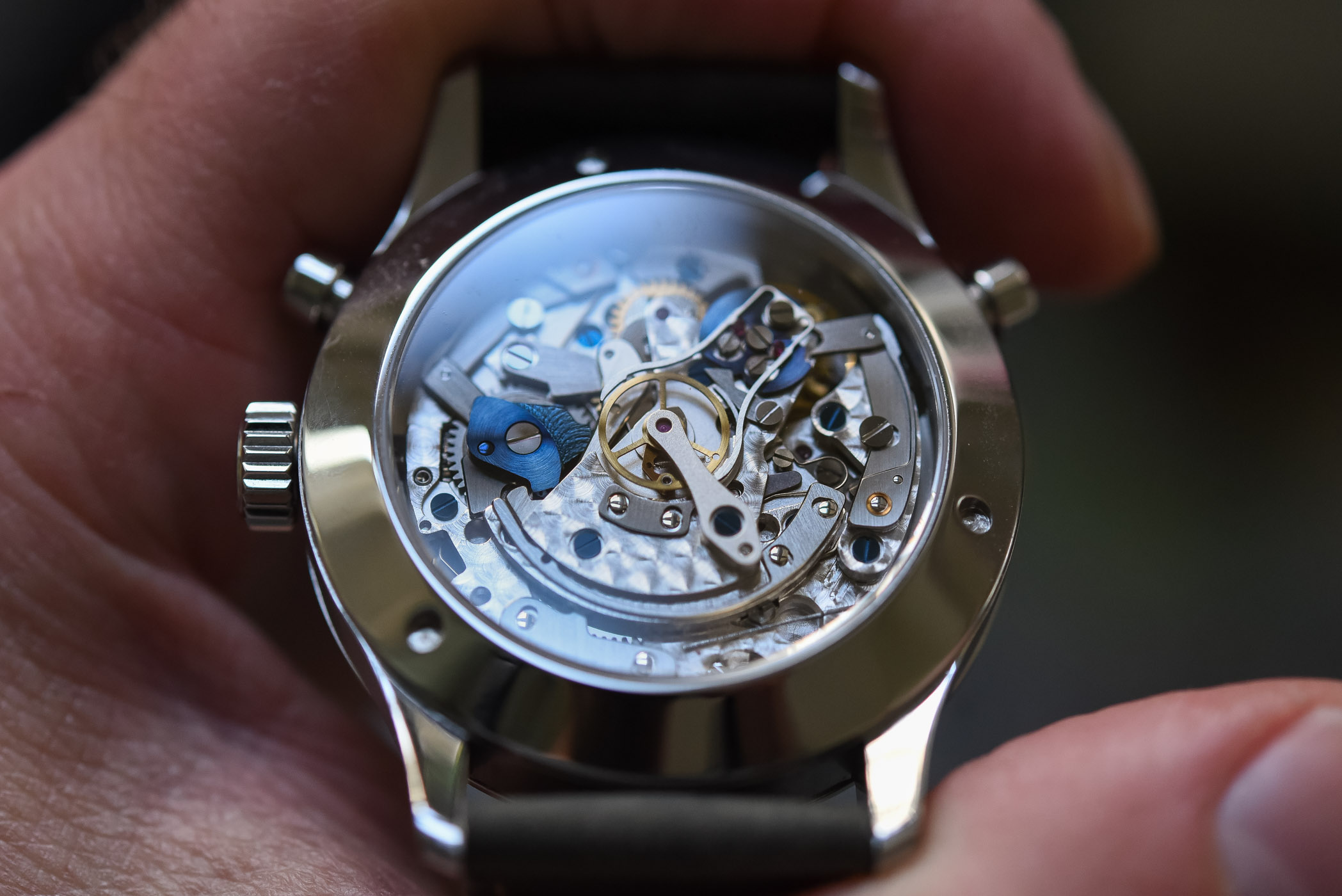
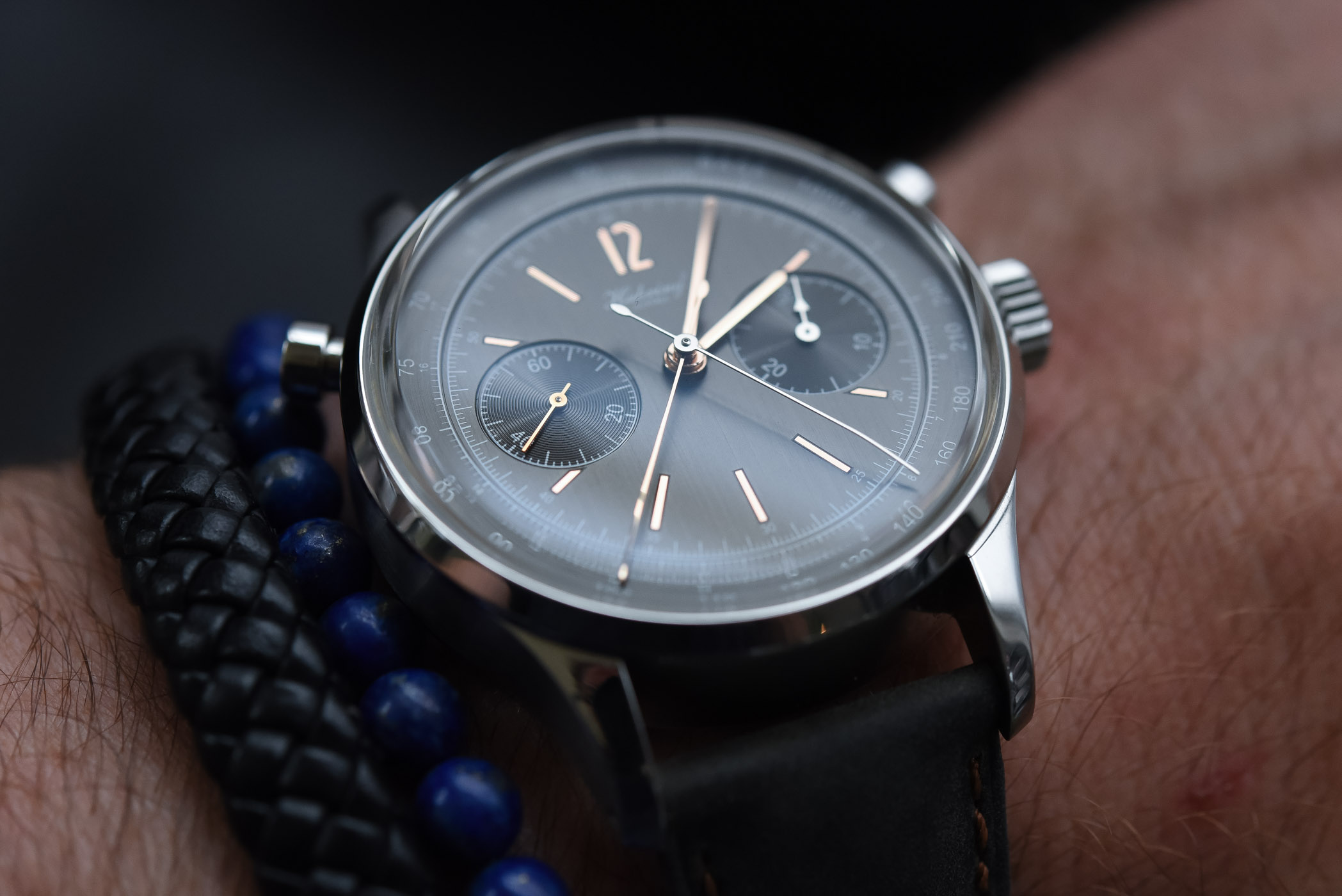
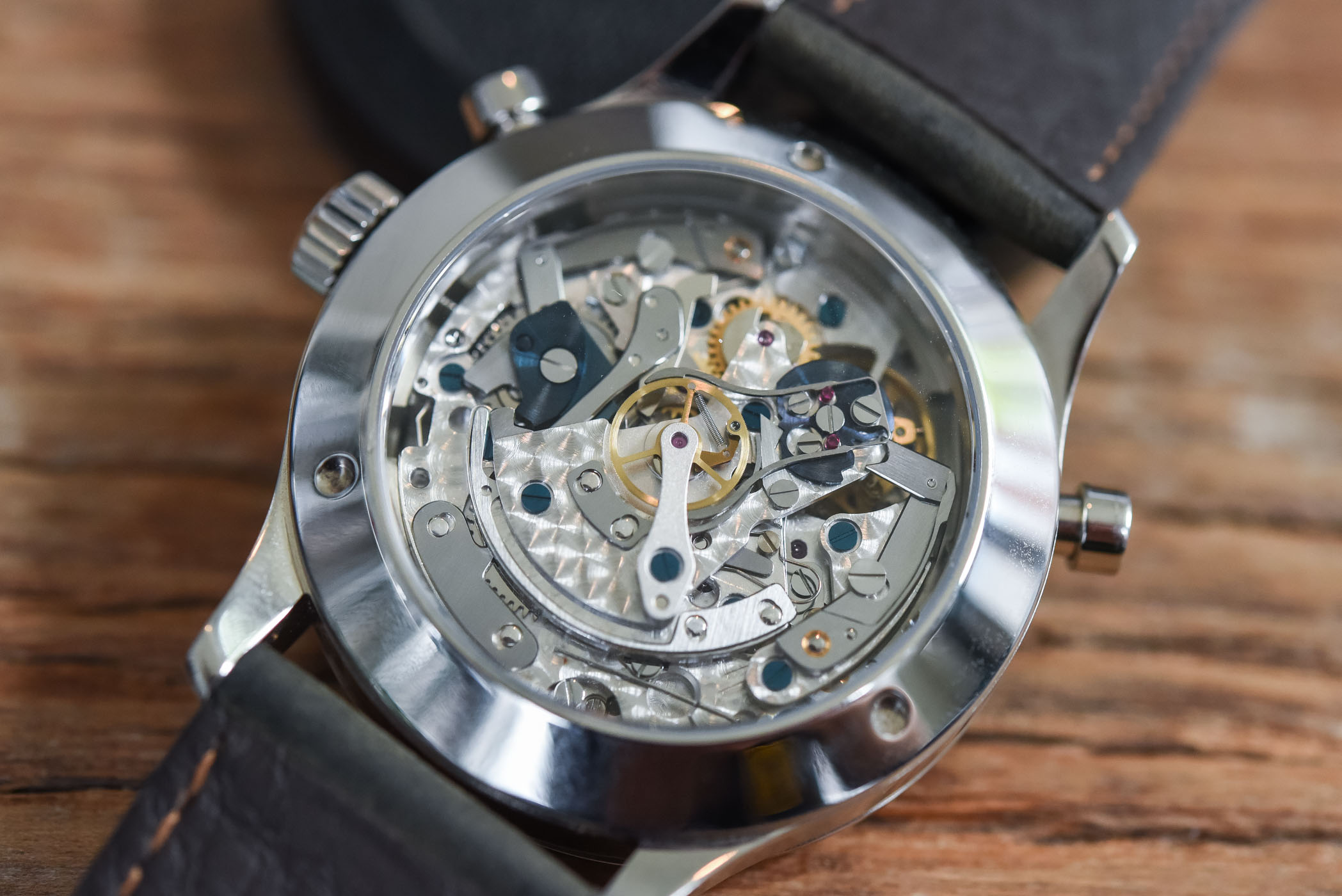
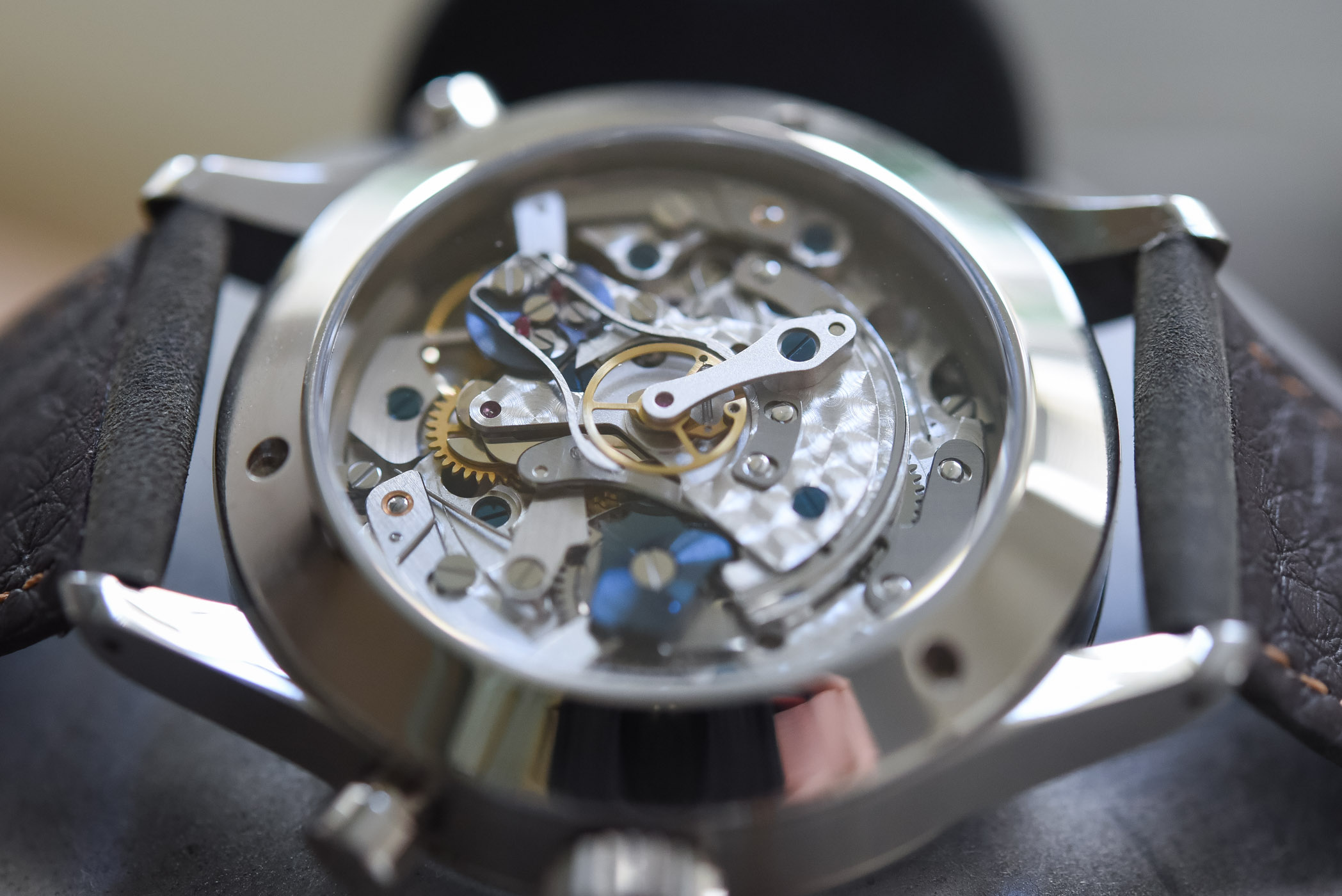
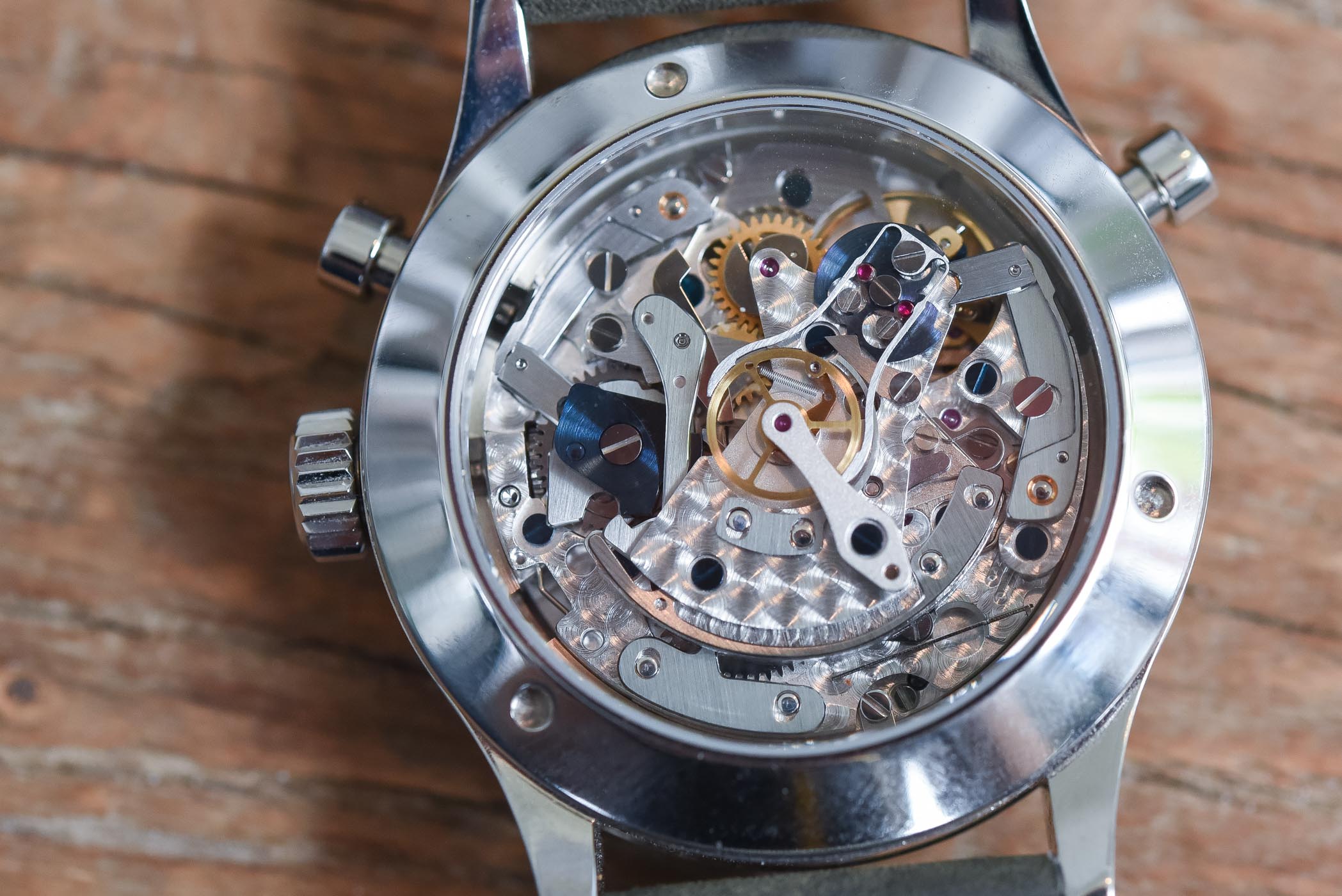
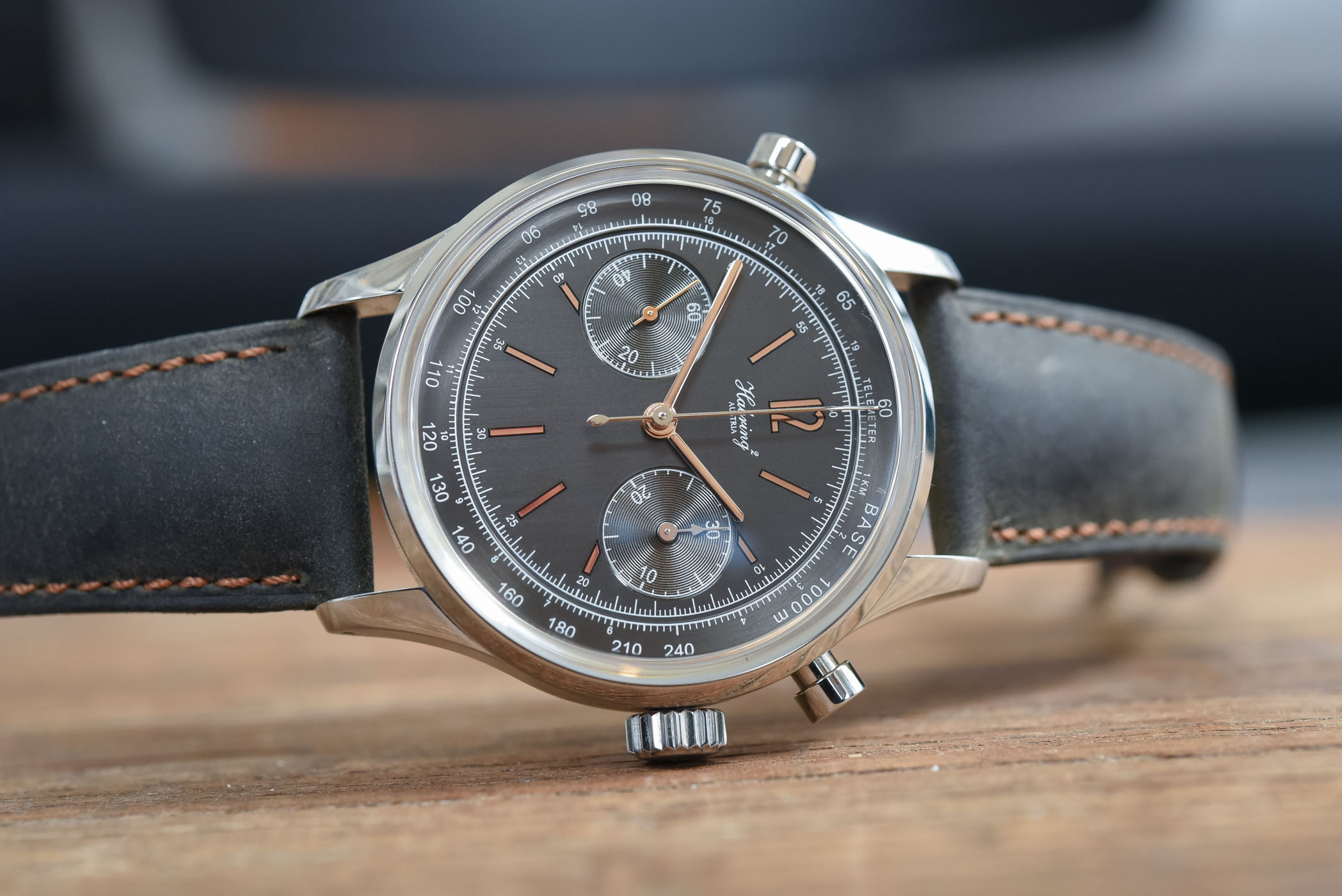


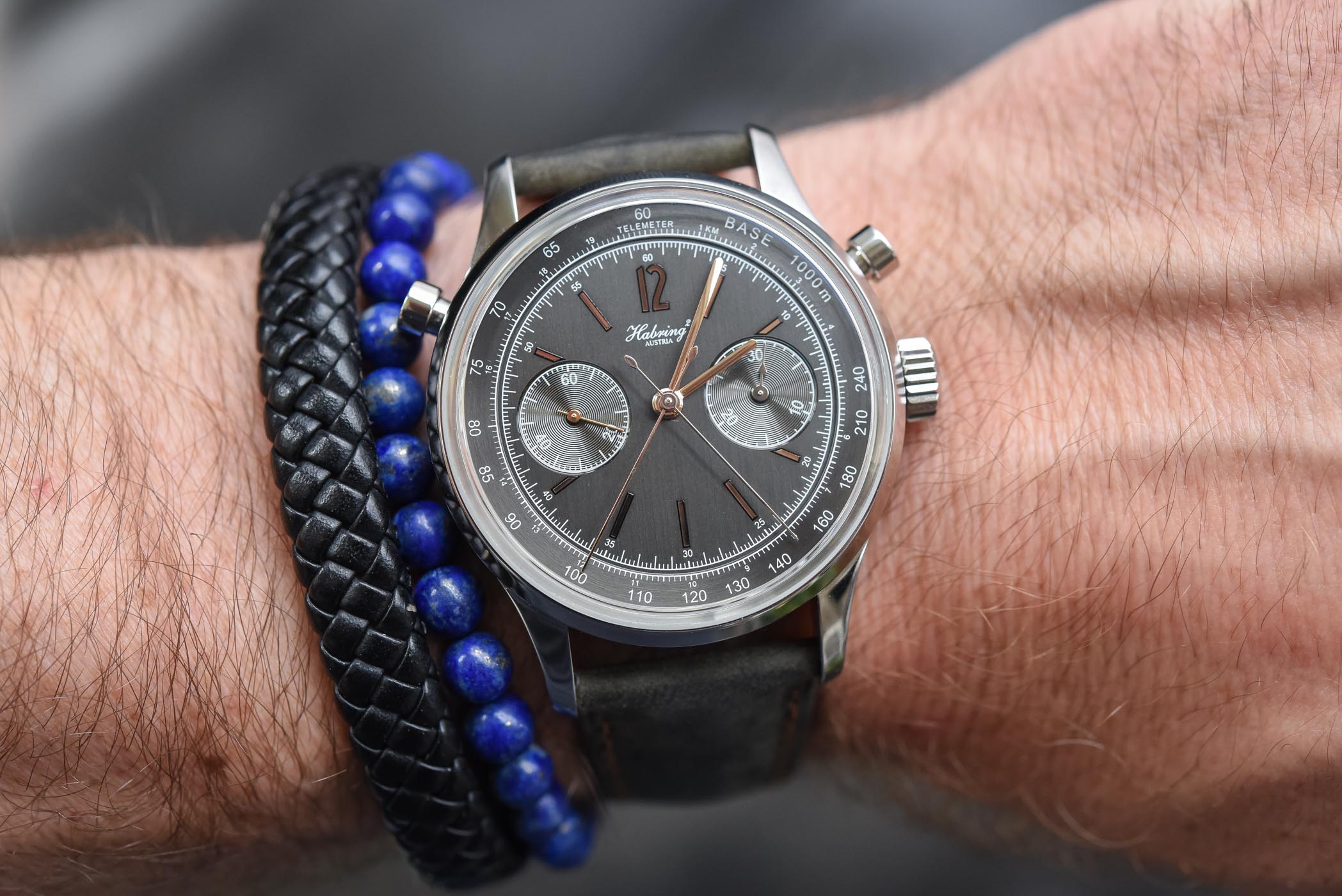

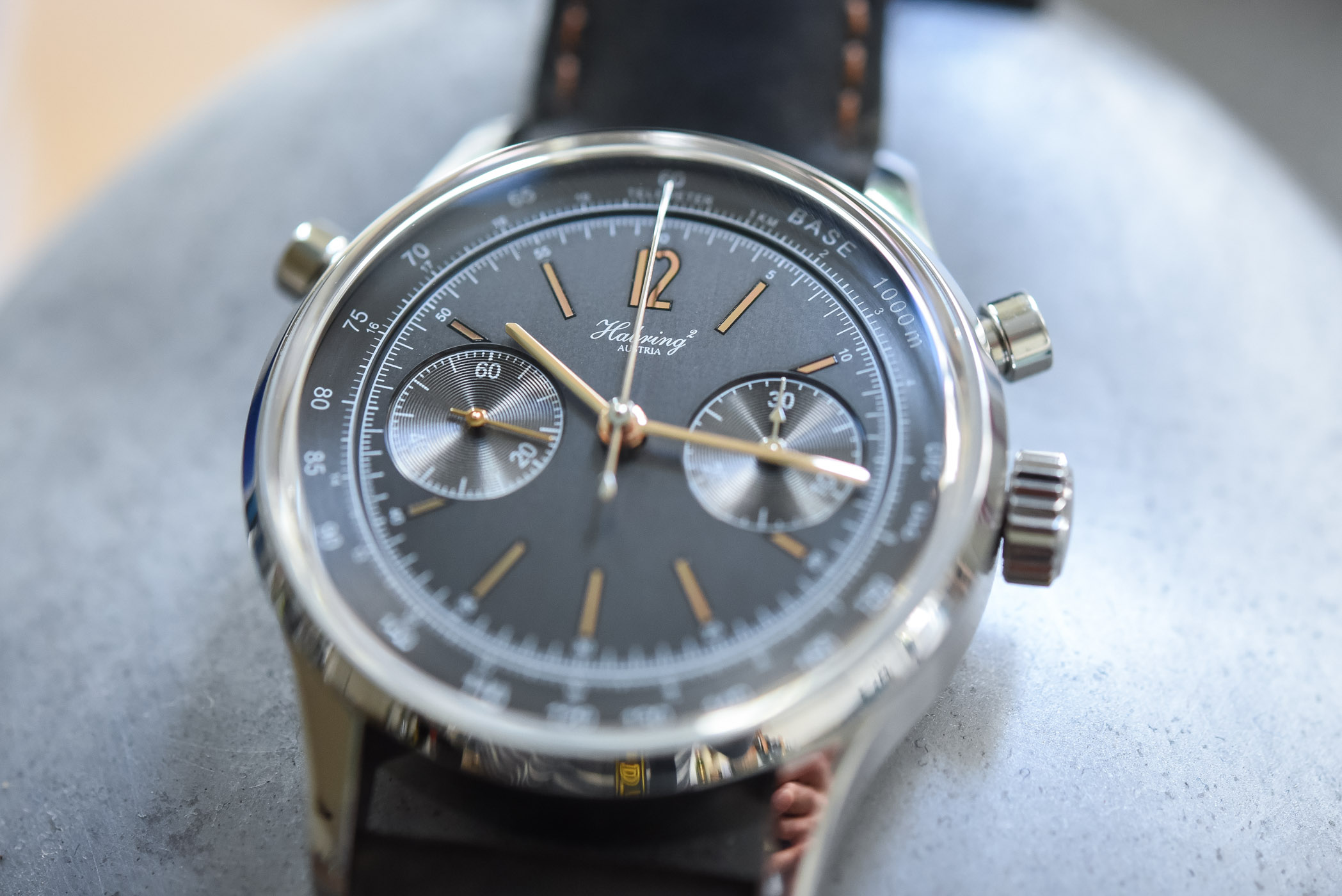

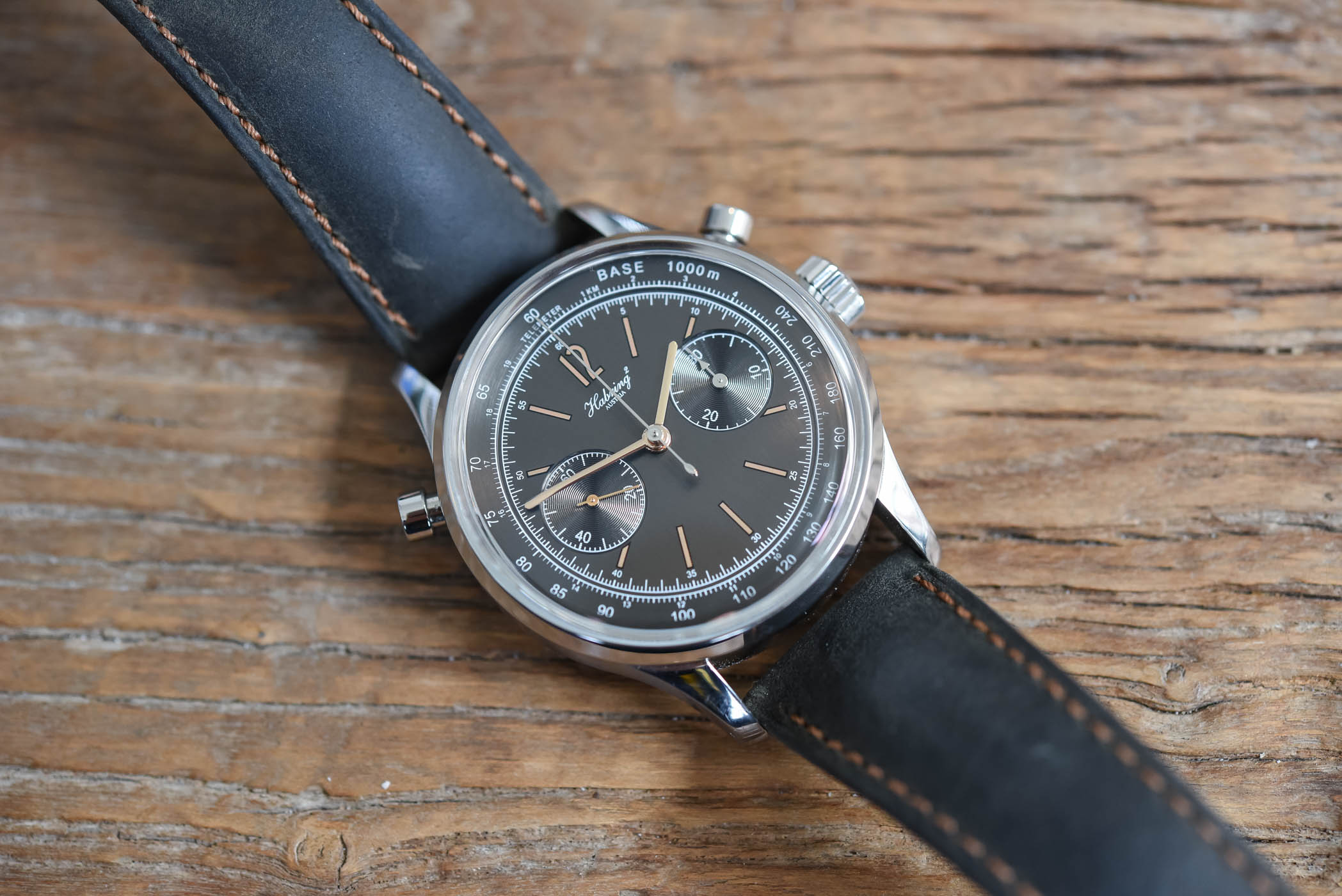



8 responses
Very cool chrono and great pricing too. Well done.
I do love me some brushed gunmetal dial.
Definitely a no-brainer for me if I had a decent wrist size
Beautiful. BUT – 48 hr power reserve is falling behind other thoroughbreds.
On the article: excellent — it covers everything that is important to me: from history to mechanical achievements, all in a clear package to read. On the watch: it would be certainly make my buying list, if not for the case size; and I know that the Habring couple could do a more balanced interpretation as I own an IWC doppel for years now and its case is a <40mm size (thicker than the reviewed watch, though…)
I have exactly this model (number 7) and I just love it to bits. It doesn’t get better than this!!!
I agree… this one came in for review initially and I just wanted to keep it, so I bought it. It’s that good!
I ordered a custom made Doppel Felix. Maria helped me design it. It is now being shipped and I could not be happier. The customer service has been excellent and I can’t wait to make it my daily for years to come.